This is the second loop of my journey through the Big Creek Conservation Area Trail. For part 1, go here.
Having returned to the parking lot, I saw some amazing aerial masters. Similar to the Kingfisher and the Black Terns, I saw Barn Swallows (Hirundo rustica) maintaining a single position in the air, this time in groups. They were incredible to watch, and thankfully one landed for a moment so I was able to get a clear photo of it.
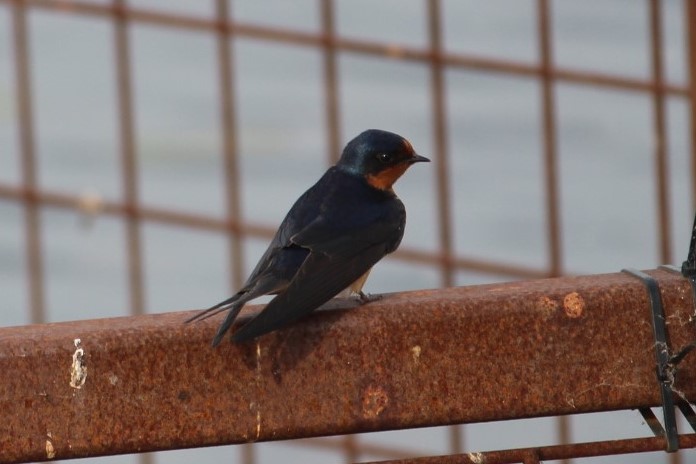
It was only recently that I realized there were so many different species of Swallows in our area. Later in this same hike I took (very blurry) pictures of two other species: Tree (Tachycineta bicolor) and Northern Rough-winged (Stelgidopteryx serripennis) Swallows.

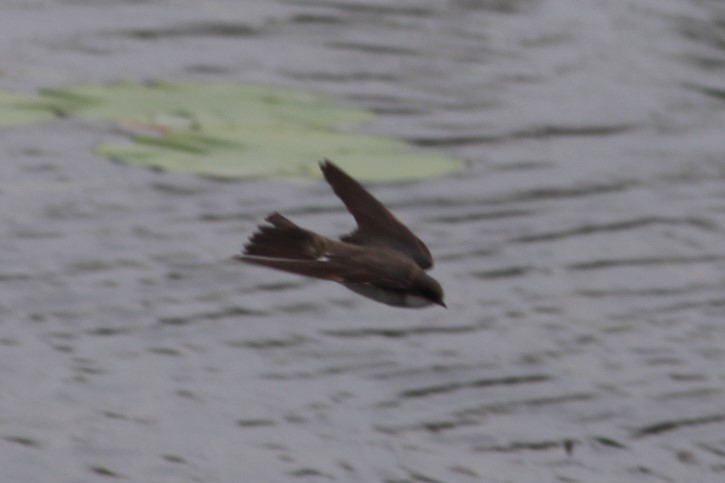
Tree Swallow (top) and Northern Rough-winged Swallow (bottom). Swallow pictures are usually blurry because they’re usually in constant motion.
I saw more Mute Swans, this time sleeping with their elongate necks tucked around themselves. In the picture below, you can really see how bizarre that long neck looks when it’s not extended.

A small brown shape on the path ahead revealed itself as an Eastern Cottontail (Sylvilagus floridanus). Wikipedia says of this animal: “The cottontail prefers an area where it can hide quickly but be out in the open.” This seems to describe my sighting perfectly as the rabbit was fully exposed on the path, but disappeared into the plants at the edges as soon as I neared, and I was unable to spot it again.
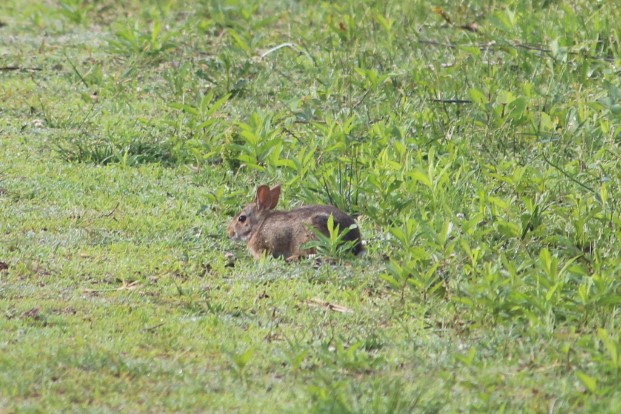
One of the only Insect observations I made were some mating Deer Flies (Genus Chrysops). Although they cause pain when they bite and can be determined adversaries, when you get a good look at them you realize they are also quite beautiful. Look at those wonderfully strange eyes and patterned wings.
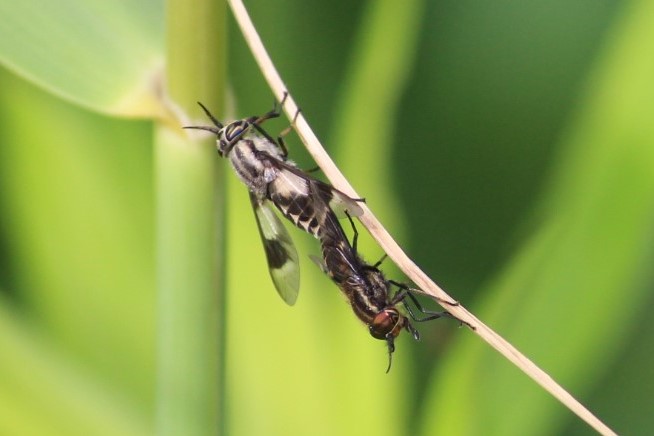
I had to pass through the Redwing assault again, and once through I saw the rarest observation of my hike. A black dome was crossing the trail at a decent rate for what I quickly realized was a turtle. In my excitement I couldn’t get the zoom lens to focus on the turtle for some reason. As I was trying to get a picture, I rushed forward, hoping to get a good picture of the turtle before it disappeared into the undergrowth that it was making for. While doing this, I startled something to my left. A Great Blue Heron (Ardea herodias) took to the skies, disturbed from its ambush site by the turtle-seeking human. I quickly snapped a couple of pictures of the Heron before moving forward, hoping to still find the Turtle.
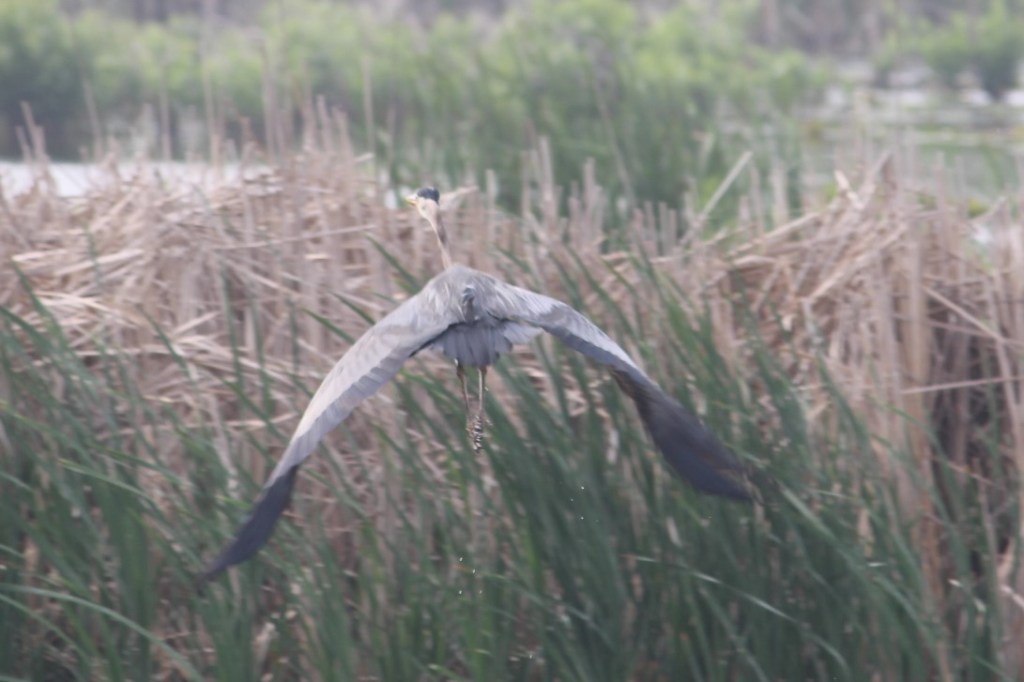
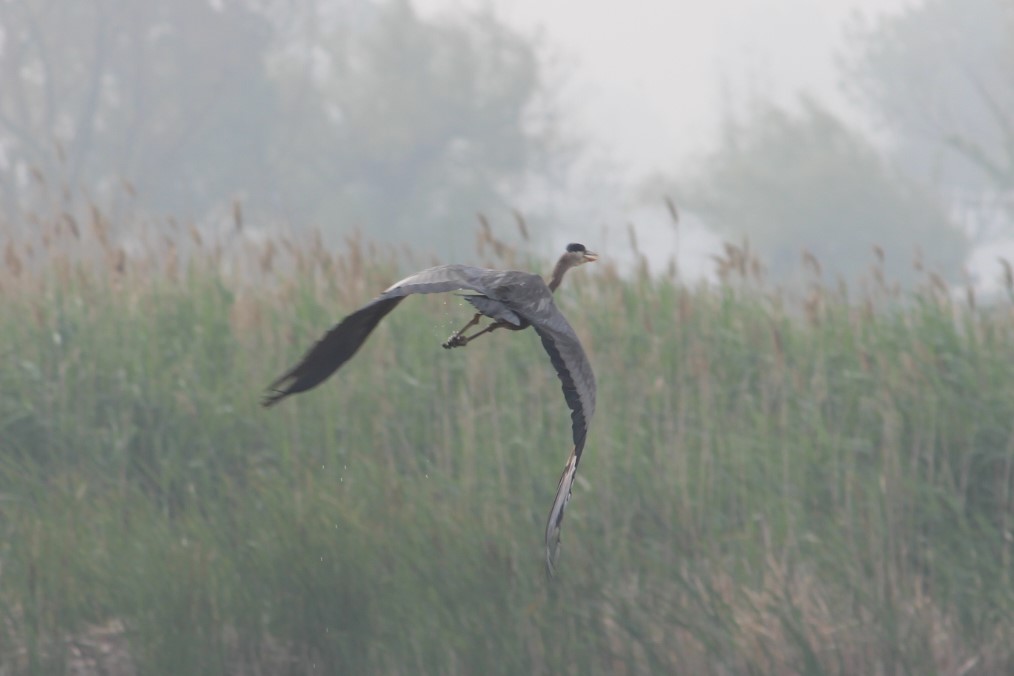
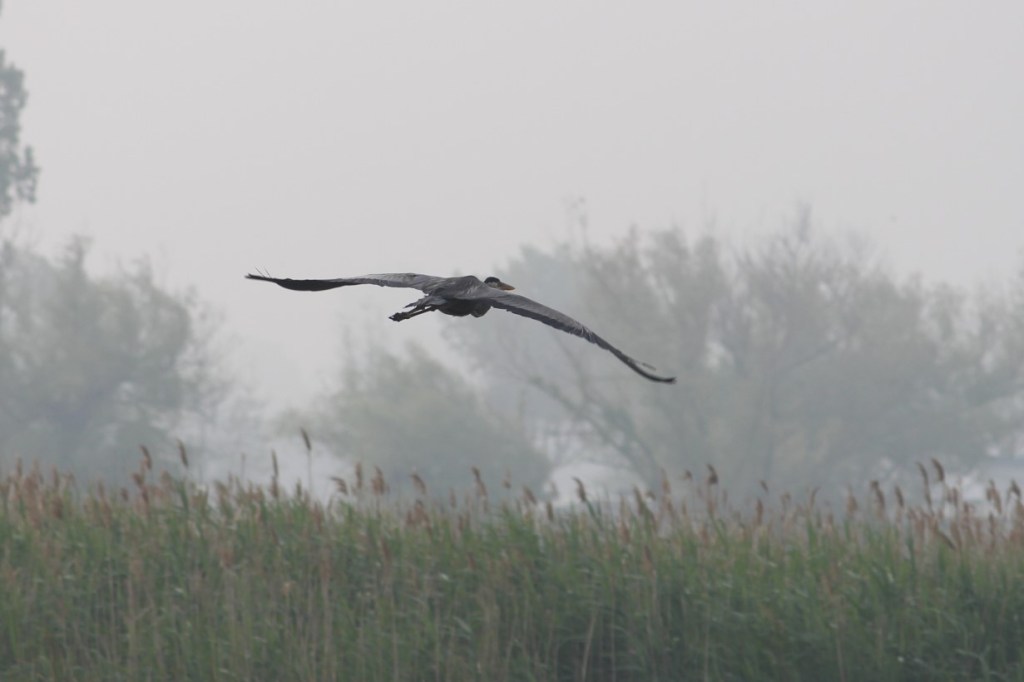
The Great Blue Heron I disturbed while rushing toward my Turtle target.
After this mutual startling, I made it to the location of the Turtle, which had reached the shelter of the vegetation. I was still able to see the turtle (it was, after all, not moving incredibly fast) and took a few pictures of its shell. From this, I was able to determine that it was a Blanding’s Turtle (Emydoidea blandingii). I have only ever encountered Snapping Turtles and Painted Turtles before, so this was a very exciting sighting for me, even if I didn’t get a good photo.
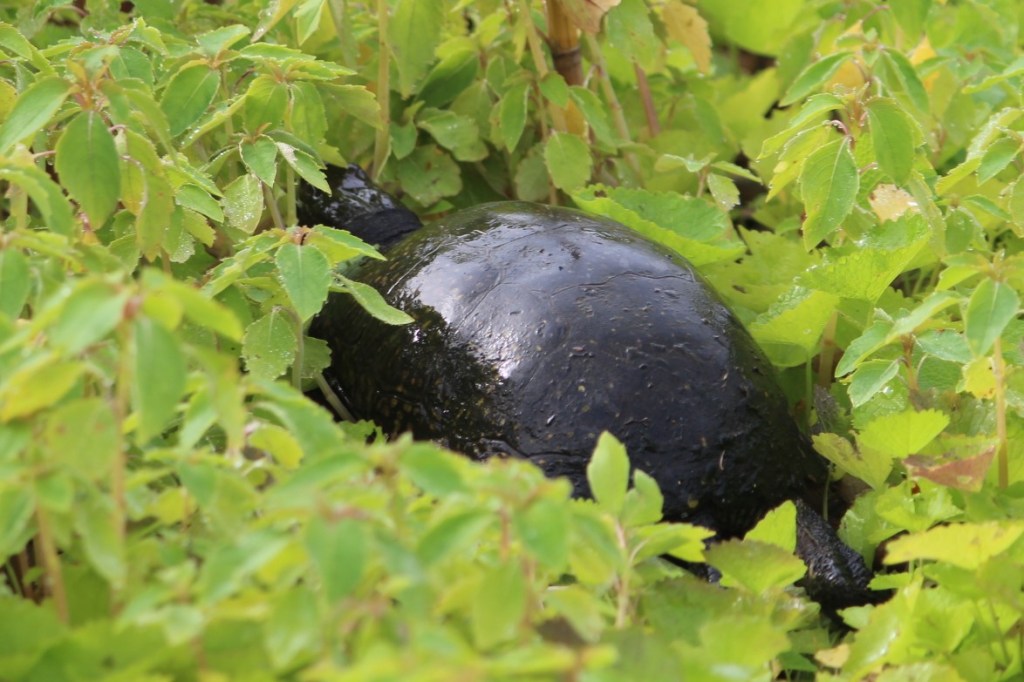
Just a few dozens of meters further I came upon a young deer browsing in the middle of the trail. It still retained the spots of a fawn, and was smaller than an adult but certainly not a helpless baby. The deer seemed pretty unaware of me until I was quite close so I got some good pictures as it looked at me and after it saw me it wandered off into the marsh.
I could hear Marsh Wrens all around making their buzzing calls, but they are extremely difficult to spot and even more difficult to capture with the camera. This was one of my closest attempts, it’s almost as though the Wren is mooning me with its upright tail sticking out into the line of my camera instead of its chirruping face:

Most times in the summer, I have the Macro lens fixed to my camera because of the abundance of insect life, but on this trail I kept the telephoto equipped for all of the bird sightings I had. Near the end of my walk, I came upon a Dragonfly perched on the ground of the path and I was able to capture it adequately with the telephoto. It was A Blue Dasher Dragonfly (Pachydiplax longipennis), which occurs throughout most of the United States but only in the very Southern portions of Canada.
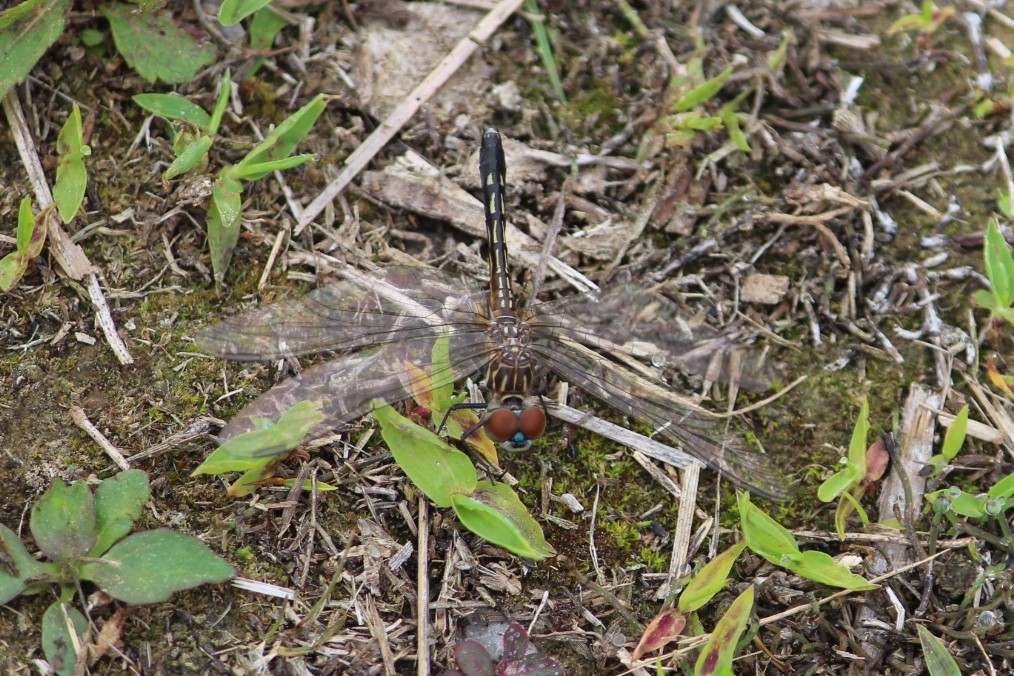
Ahead of me, meandering along the trail, was a pair of young Canada Geese (Branta canadensis). They were interesting to me, because they weren’t the Goslings following their parents and they weren’t Adult size either. The one appears to be much more “gosling-like’ than the other, which has started to acquire the characteristic facial markings of adult Canada Geese.

My final farewell to the trail this day was seeing a Heron stalking in the shallows, wreathed in fog. This Heron of the Mists was a perfect sendoff to my journey through the Long Point wetlands.
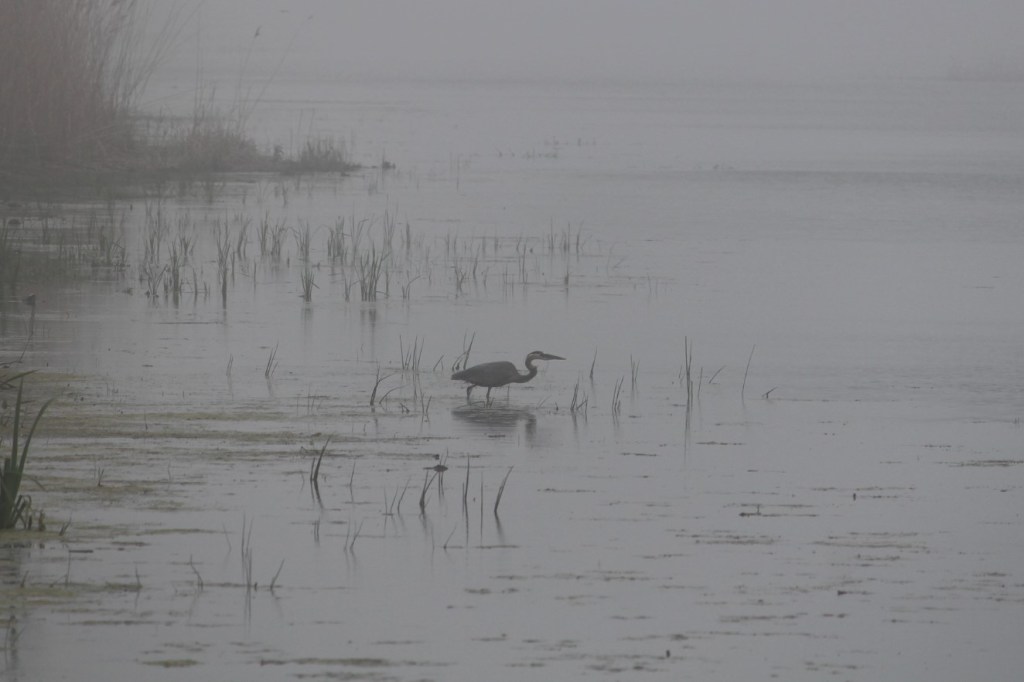
For previous posts about nature observations of this kind, see:
–MacGregor Point Observations (May 2018
-Algonquin Observations (July 2018), Day One, Two, Three, Four, Five, Six
And if you’re interested in seeing more of my photos and learning some facts about the creatures I’ve observed, follow me on Instagram @norfolknaturalist.
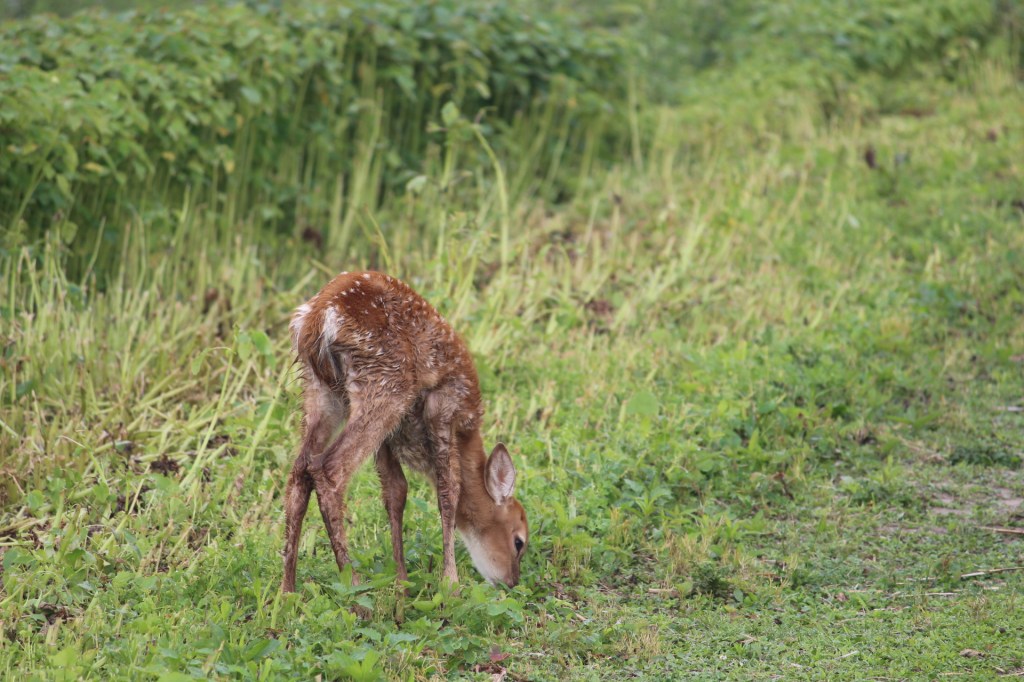
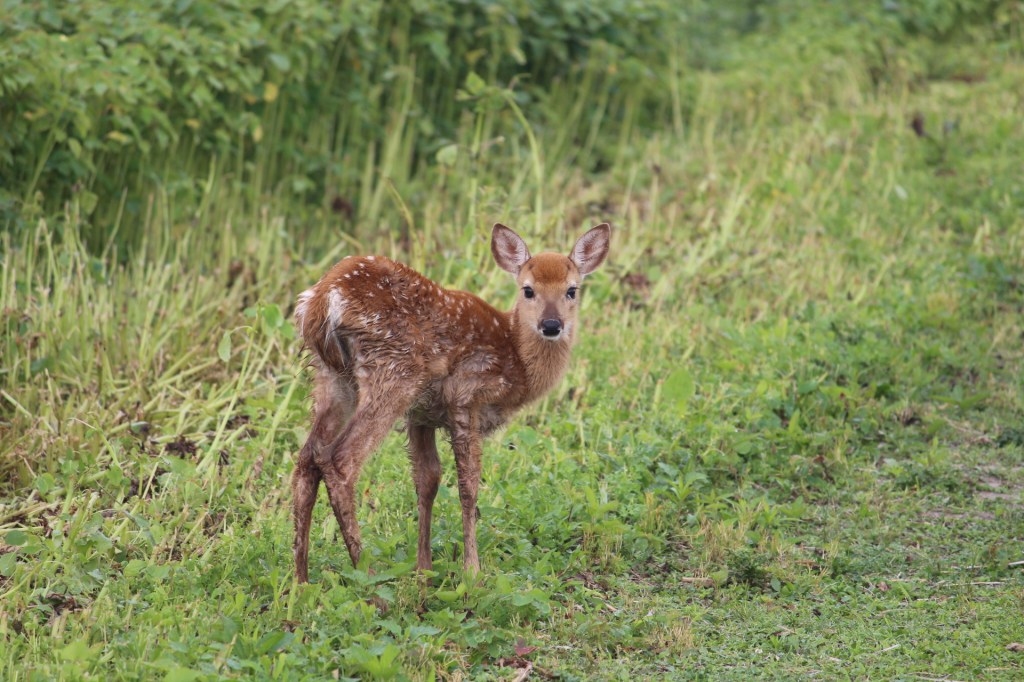
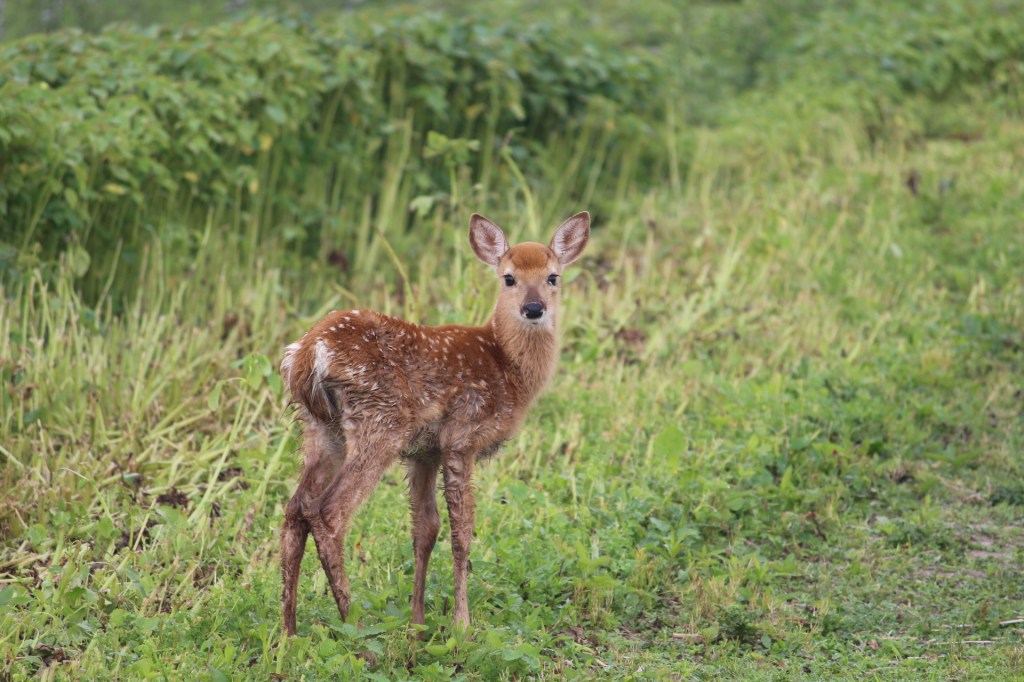
9 replies on “A Visit to Big Creek, Part 2”
[…] -A Visit to Big Creek, Part 1 and 2 […]
LikeLike
[…] –A Visit to Big Creek, Part 2 […]
LikeLike
[…] –A Visit to Big Creek, Part 2 […]
LikeLike
[…] -A Visit to Big Creek, Part 1 and Part 2 […]
LikeLike
[…] -A Visit to Big Creek, Part 1 and Part 2 […]
LikeLike
[…] -A Visit to Big Creek, Part 1 and Part 2 […]
LikeLike
[…] myself. First I wrote up my experiences visiting a trail in Long Point, in two parts (Part 1 and Part 2). Then I wrote an article about Wrens […]
LikeLike
[…] –A Visit to Big Creek, Part 1 and Part 2 […]
LikeLike
[…] –A Visit to Big Creek, Part 2 […]
LikeLike